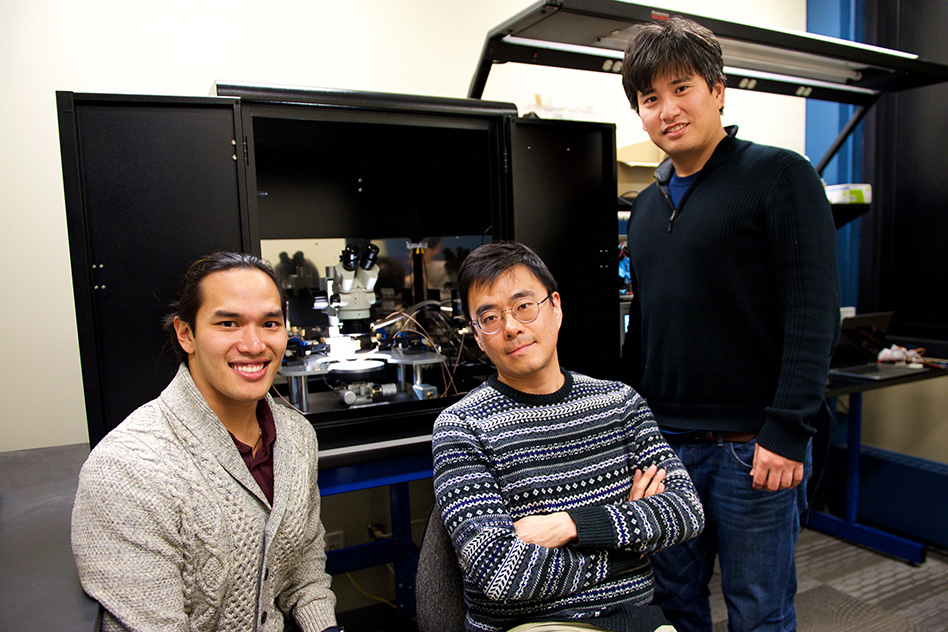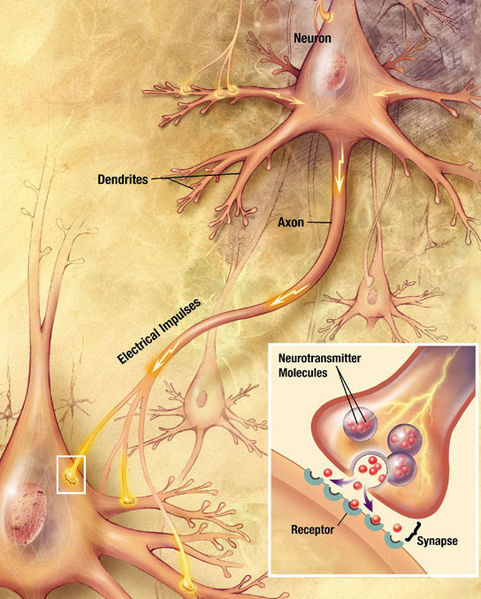Scientists have created an artificial synapse for the future "brain on a crystal"
Human brain is the most unexplored structure in the universe. 100 billion neurons transmit to each other nerve impulses with different amplitudes and frequencies of 100 trillion synapses. With the help of this system, we learn and solve many problems with lightning speed. A team of engineers at the Massachusetts Institute of Technology has created an artificial synapse, which is devoid of one of the main drawbacks of existing samples - the unpredictability of the movement of ions.

In 1906, the Nobel Prize in Medicine was awarded for his work on the structure of the nervous system and the classification of nerve cells Camillo Golgi and Santiage Ramon-i-Cahal . Scientists and doctors over the past hundred years have managed to learn a lot about the nervous system and the human brain, but so far not all questions have answers. Especially significant were the discoveries made in the framework of the project The Human Brain Project using the latest technological advances in electronic and 3D microscopy.
In the brain, neurons are connected by axons - like electrical cables. Nerve impulses along axons pass through synapseswith the help of chemical mediators, electrically, in which ions pass from one cell to another, and mixed when a chemical transfer enhances the electrical mechanism.

Transmission of impulses between two neurons. US Department of Health
Scientists working in the field of neuromorphic computingtrying to create a computer that acts in a way similar to the human brain. Instead of binary calculations with ones and zeros, they try to use elements that transmit “analog” signals using different “shades”, as in the human brain, where the signal depends on the number of ions passing through the synapse. If modern computers are suitable for solving equations and running algorithms, in the case of interaction with the environment they are not able to show the efficiency available to the human brain: in 2012, Google created a neural network for recognizing cats using 1000 servers and 16 thousand cores . Small neuromorphic chips will be able to perform in parallel the millions of calculations that only supercomputers are capable of today.
When creating neuromorphic chips for the simulation of a synapse, amorphous materials are most often used. The ions that pass through them have many directions for movement. This is the difficulty: because of this, it is impossible to predict where exactly the signal will go and how many ions will be lost along the way.
Engineers from the Massachusetts Institute of Technology have designed such an artificial synapse in which they could control the direction of the electrical signal passing through it. Instead of amorphous materials, scientists used monocrystalline siliconin which they tried to create a defect through which ions could predictably pass. A microscopic honeycomb pattern was applied to the silicon wafer. A layer of germanium with a similar pattern was applied on this plate. These two materials together form a "funnel" that causes the ions to flow along a strictly defined path.
Then the scientists checked the effectiveness of the invention: almost the same ion flux passed through each synapse. The difference between the synapses was up to 4%, and when testing one synapse for 700 cycles, the changes in the passing current were up to 1% from cycle to cycle. According to the developers, such results have not yet been achieved in synapses built on the basis of amorphous materials.
The final test for development was the task of handwriting recognition. A team of scientists produced a computer simulation of an artificial neural network of three layers of neurons, interconnected by two layers of artificial synapses, the characteristics of which were originally measured from the chip they built. Tens of thousands of handwriting samples, which are usually used by developers of neuromorphic chips, were loaded into the model. The neural network recognized samples in 95% of cases, slightly worse than the 97% accuracy of existing software algorithms. The next goal of the team is to produce a working neuromorphic chip that could repeat the experiment performed using the simulation.
“We want a nail-sized chip to replace one large supercomputer,” says the head of the engineering team.

In 1906, the Nobel Prize in Medicine was awarded for his work on the structure of the nervous system and the classification of nerve cells Camillo Golgi and Santiage Ramon-i-Cahal . Scientists and doctors over the past hundred years have managed to learn a lot about the nervous system and the human brain, but so far not all questions have answers. Especially significant were the discoveries made in the framework of the project The Human Brain Project using the latest technological advances in electronic and 3D microscopy.
In the brain, neurons are connected by axons - like electrical cables. Nerve impulses along axons pass through synapseswith the help of chemical mediators, electrically, in which ions pass from one cell to another, and mixed when a chemical transfer enhances the electrical mechanism.

Transmission of impulses between two neurons. US Department of Health
Scientists working in the field of neuromorphic computingtrying to create a computer that acts in a way similar to the human brain. Instead of binary calculations with ones and zeros, they try to use elements that transmit “analog” signals using different “shades”, as in the human brain, where the signal depends on the number of ions passing through the synapse. If modern computers are suitable for solving equations and running algorithms, in the case of interaction with the environment they are not able to show the efficiency available to the human brain: in 2012, Google created a neural network for recognizing cats using 1000 servers and 16 thousand cores . Small neuromorphic chips will be able to perform in parallel the millions of calculations that only supercomputers are capable of today.
When creating neuromorphic chips for the simulation of a synapse, amorphous materials are most often used. The ions that pass through them have many directions for movement. This is the difficulty: because of this, it is impossible to predict where exactly the signal will go and how many ions will be lost along the way.
Engineers from the Massachusetts Institute of Technology have designed such an artificial synapse in which they could control the direction of the electrical signal passing through it. Instead of amorphous materials, scientists used monocrystalline siliconin which they tried to create a defect through which ions could predictably pass. A microscopic honeycomb pattern was applied to the silicon wafer. A layer of germanium with a similar pattern was applied on this plate. These two materials together form a "funnel" that causes the ions to flow along a strictly defined path.
Then the scientists checked the effectiveness of the invention: almost the same ion flux passed through each synapse. The difference between the synapses was up to 4%, and when testing one synapse for 700 cycles, the changes in the passing current were up to 1% from cycle to cycle. According to the developers, such results have not yet been achieved in synapses built on the basis of amorphous materials.
The final test for development was the task of handwriting recognition. A team of scientists produced a computer simulation of an artificial neural network of three layers of neurons, interconnected by two layers of artificial synapses, the characteristics of which were originally measured from the chip they built. Tens of thousands of handwriting samples, which are usually used by developers of neuromorphic chips, were loaded into the model. The neural network recognized samples in 95% of cases, slightly worse than the 97% accuracy of existing software algorithms. The next goal of the team is to produce a working neuromorphic chip that could repeat the experiment performed using the simulation.
“We want a nail-sized chip to replace one large supercomputer,” says the head of the engineering team.
